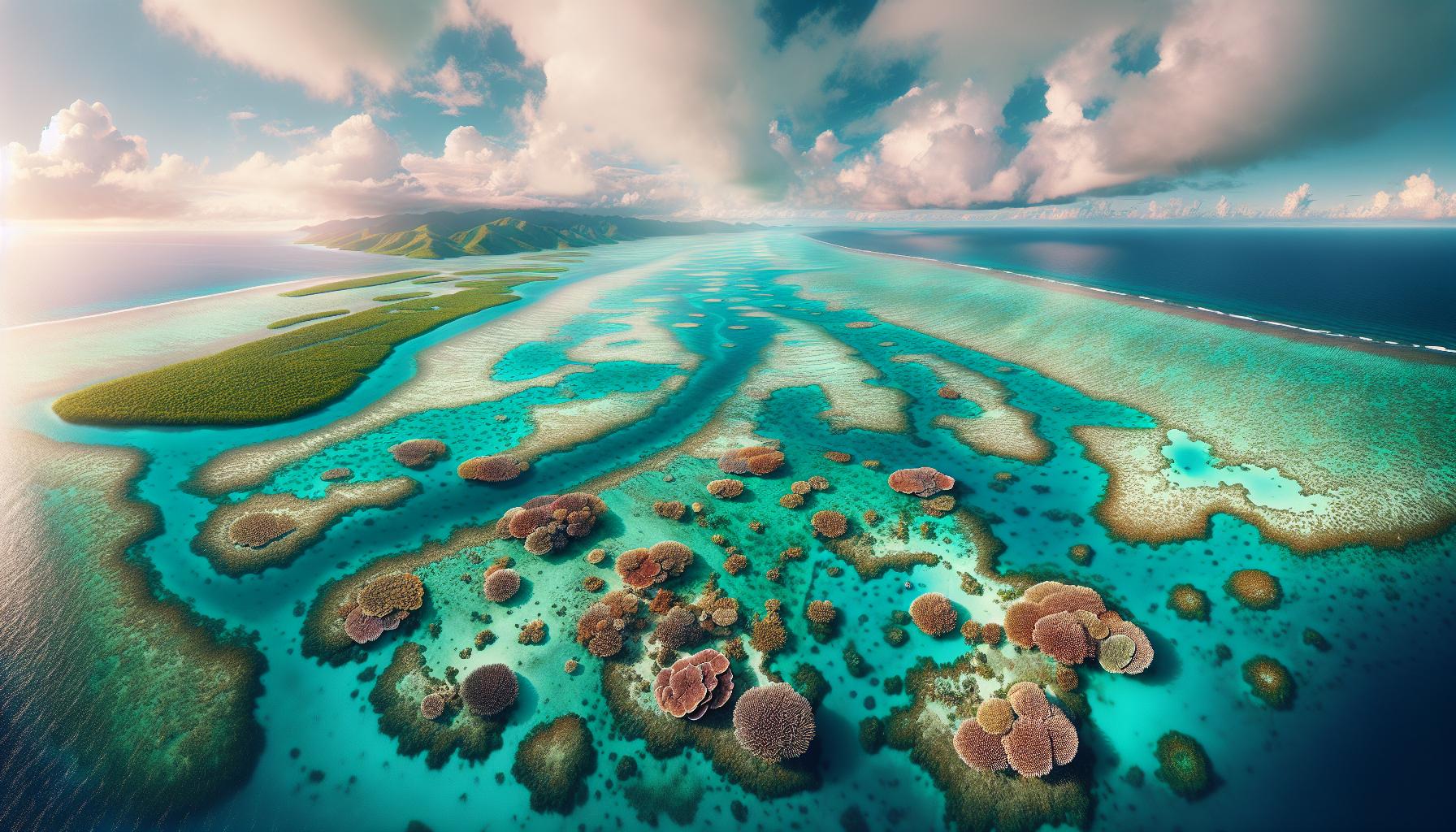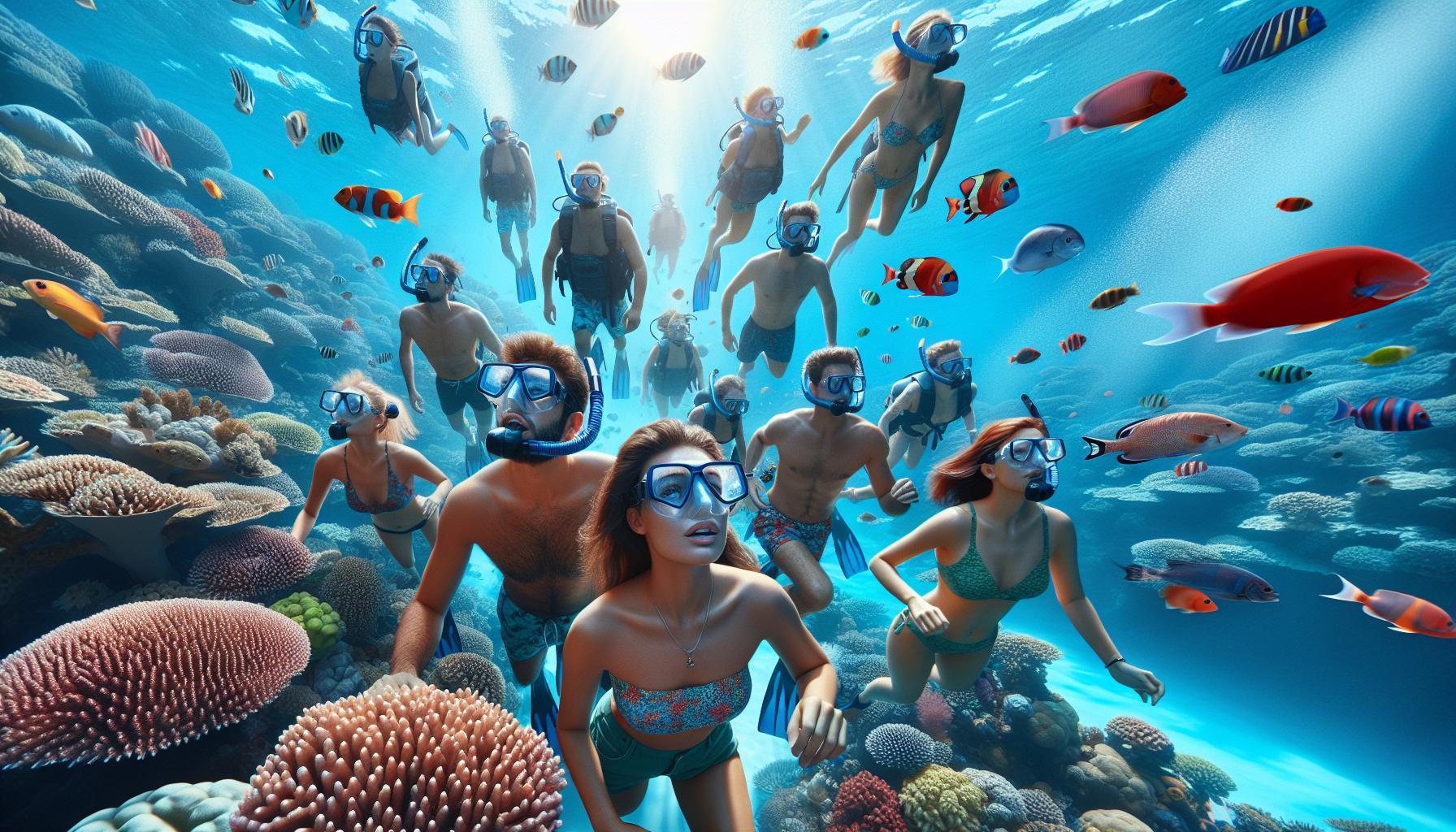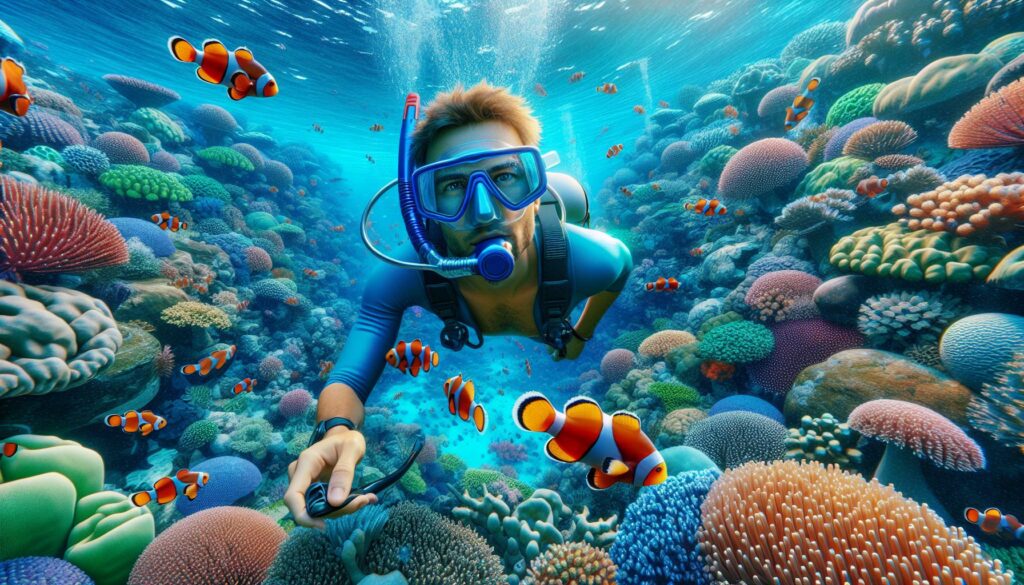The Great Barrier Reef is one of nature’s most breathtaking masterpieces, stretching over 1,400 miles along the Queensland coast of Australia. It’s not just a stunning underwater paradise; it’s a vibrant ecosystem teeming with life. As I explore this locale, I’m constantly amazed by the colorful coral formations and the diverse marine species that call this reef home.
Visiting the Great Barrier Reef offers more than just a visual feast. It’s an opportunity to connect with nature in a way that few places on Earth can provide. From snorkeling among the coral gardens to witnessing the majestic turtles gliding through the water, every moment spent here is unforgettable. Join me as I dive deeper into the wonders of this incredible locale and discover what makes the Great Barrier Reef a must-visit destination.
Key Takeaways
- The Great Barrier Reef spans over 1,400 miles along Queensland, Australia, comprising 2,900 reefs and 900 islands, making it one of the largest coral reef systems in the world.
- This locale is home to a rich biodiversity, featuring 1,500 fish species, 400 coral types, and various marine life, including dolphins and turtles.
- The Great Barrier Reef supports essential surrounding ecosystems like mangroves and seagrass meadows, which play crucial roles in the health and diversity of marine life.
- The reef holds significant cultural value for Indigenous communities, who foster sustainable practices and share traditional knowledge about preservation.
- Tourism is a major economic driver, attracting approximately 2.5 million visitors annually, emphasizing the importance of balancing economic benefits with conservation efforts.
- Conservation initiatives, including the Great Barrier Reef Marine Park Authority and the Reef 2050 Plan, are vital in addressing threats like climate change, pollution, and overfishing to ensure the reef’s long-term sustainability.
Great Barrier Reef Locale
The Great Barrier Reef extends over 1,400 miles along the Queensland coast, creating one of the world’s largest coral reef systems. This locale encompasses 2,900 individual reefs and around 900 islands, contributing to its rich biodiversity. The reef houses approximately 1,500 species of fish, 400 types of coral, and various marine life, including dolphins, turtles, and sharks.
The environment of the Great Barrier Reef supports numerous ecosystems, ranging from shallow coastal waters to deep oceanic trenches. Its warm, clear waters provide ideal conditions for coral growth and marine species interactions. Visitors can experience activities like snorkeling, scuba diving, and reef cruises, showcasing stunning coral formations and colorful marine life.
Accessible locations such as Cairns, Port Douglas, and the Whitsunday Islands serve as gateways for exploration. Popular sites within the reef include the Cod Hole, known for giant potato cod, and the Heart Reef, famous for its heart-shaped coral formation. Each visit to this locale offers unique opportunities to engage with nature while appreciating the intricate relationships within this underwater paradise.
Geographic Significance

The Great Barrier Reef holds immense geographic importance due to its vast expanse and unique ecosystems. Its location along Australia’s Queensland coast enhances its role as a key natural landmark.
Location and Size
The Great Barrier Reef stretches over 1,400 miles along the northeastern coastline of Australia. I find it remarkable that this reef system includes approximately 2,900 individual reefs and around 900 islands. Covering an area of about 344,400 square kilometers, it stands as one of the largest coral reef systems worldwide. The proximity to the mainland and the Barrier Reef’s expansive size create diverse habitats that support a multitude of marine species.
Surrounding Ecosystems
Surrounding ecosystems play a crucial role in the reef’s health and diversity. Coastal mangroves, seagrass meadows, and coral cays contribute to the complex ecological web. Mangroves serve as nurseries for young fish, offering protection from predators. Seagrass meadows support herbivorous marine life, such as turtles and dugongs. These ecosystems interact directly with the reef, promoting higher biodiversity and resilience against environmental changes. Understanding these relationships highlights the interconnected nature of the Great Barrier Reef and its surrounding environments.
Biodiversity in the Great Barrier Reef Locale

The Great Barrier Reef showcases an incredible array of biodiversity, featuring a complex web of marine life. This locale, rich in ecosystems, presents a vibrant tapestry of species and habitats that I find fascinating.
Marine Life Diversity
The reef supports approximately 1,500 fish species, including clownfish, parrotfish, and lionfish. These species thrive within 400 types of coral that create diverse habitats. Other inhabitants include dolphins, sea turtles, and over 1,500 species of mollusks. The abundance of marine life fosters intricate relationships, making the reef an essential ecosystem for countless organisms.
Unique Species and Habitats
Specific unique species, such as the dugong and the Great Barrier Reef’s coral trout, play crucial roles in ecological balance. Various habitats, including coral reefs, seagrass beds, and mangroves, provide necessary environments for different life stages. Mangroves serve as nurseries for young fish, while seagrass beds support herbivorous species. Such unique interactions enhance resilience and adaptability, essential for surviving environmental changes.
Cultural Importance of the Great Barrier Reef Locale

The Great Barrier Reef locale holds significant cultural value for various communities and the broader economy. Understanding this importance reveals the deep connections people have with this extraordinary ecosystem.
Indigenous Communities
Indigenous communities, such as the Aboriginal and Torres Strait Islanders, maintain profound spiritual and cultural ties to the Great Barrier Reef. They view the reef as a living entity, embodying ancestors and traditions. These communities engage in sustainable practices that reflect their respect for the reef, ensuring its preservation. Traditional knowledge informs their understanding of marine ecosystems, enhancing conservation efforts. Many Indigenous people continue to share their stories, songs, and cultural practices related to the reef, enriching its cultural significance.
Tourism and Economy
Tourism significantly contributes to the economy surrounding the Great Barrier Reef. Approximately 2.5 million visitors explore the reef annually, drawn by snorkeling, diving, and eco-tours. This influx generates revenue for local businesses, including hotels, restaurants, and tour operators. The tourism industry supports thousands of jobs and encourages investment in conservation efforts. Sustainable tourism practices help protect the reef while providing economic benefits, fostering a balance between visitor enjoyment and environmental stewardship.
Conservation Efforts
Conservation efforts at the Great Barrier Reef focus on addressing current threats and implementing initiatives and programs to safeguard this natural wonder.
Current Threats
Climate change poses the most significant threat to the Great Barrier Reef, leading to coral bleaching and habitat degradation. Ocean temperatures have increased over 1°C since the late 19th century, resulting in widespread coral bleaching events that have devastated vast sections of the reef. Pollution from agricultural runoff continues to harm the ecosystem, introducing excess nutrients that encourage harmful algal blooms. Overfishing remains a concern, disrupting the delicate balance of marine life and affecting species like the Great Barrier Reef’s coral trout. Additionally, coastal development threatens to diminish essential habitats, such as mangroves and seagrass meadows, which are vital for marine species’ survival.
Initiatives and Programs
Several initiatives and programs aim to protect the Great Barrier Reef’s health and sustainability. The Great Barrier Reef Marine Park Authority oversees the management of the marine park, enforcing regulations on fishing, tourism, and environmental impact. The Reef 2050 Long-Term Sustainability Plan outlines a comprehensive approach to address threats and promote resilience through research and restoration efforts. Engaging local communities and Indigenous groups is crucial, as they contribute traditional knowledge and sustainable practices to manage this ecosystem. Additionally, programs focused on reducing water pollution and promoting coral restoration are in place, utilizing techniques like coral farming and transplanting. These efforts collectively enhance the reef’s ability to recover and thrive amid environmental challenges.



